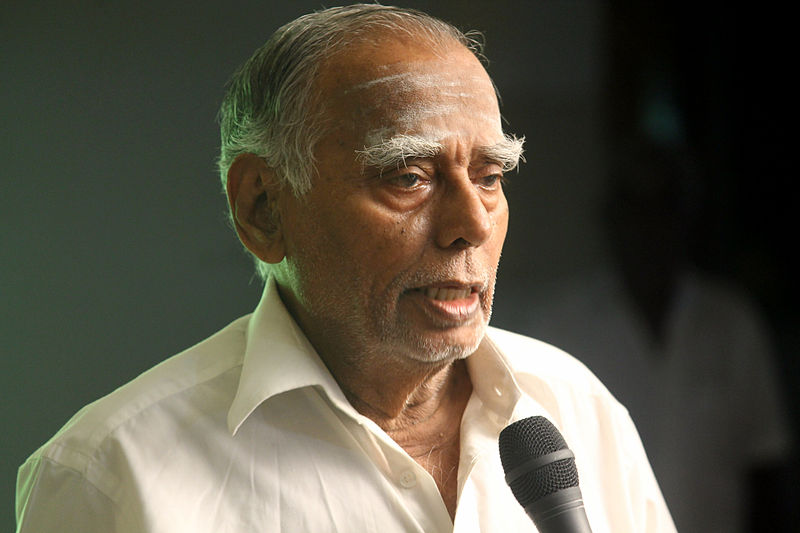
Obit: R. Nagaswamy, the doyen of archaeology, passes away in Chennai

Eminent archaeologist and epigraphist R. Nagaswamy passed away on Sunday (January 23) in his Chennai residence after a brief illness. He was 92.
He was the first director of Tamil Nadu’s archaeology department and had been awarded the Padma Bhushan for his contribution to Indian heritage.
Ramachandran Nagaswamy, who was born on August 10, 1930, did his post-graduation in Sanskrit from the University of Madras. After which, he obtained his PhD in archaeology from the University of Pune. He also trained in the Archaeological Survey of India (ASI).
Besides archaeology and epigraphy, his fields of specialisation included literature, paleography, numismatics, temple rituals and philosophy. In 1959, he joined as a curator of art and archaeology at the Government Museum, Chennai and worked there till 1963.
Between 1963 and 1965, Nagaswamy was appointed as an assistant special officer for archaeology for the state and he was the first person to head the newly-formed Tamil Nadu Archaeology Department and served there for 22 years between 1966 and 1988.
During his tenure, he published photographs of popular monuments and brought out pocket guides aimed at children. Nagaswamy involved school and college students in cleaning and preserving the monuments.
Also read: Why this historian riling Stalin and other Dravidianists
He was credited with initiating many efforts and initiatives to protect many of the monuments like the first century Chera inscriptions at Pugalur, near Karur district, the palace site of the Imperial Cholas at Gangaikondacholapuram, Ariyalur district, the 17th century Thirumalai Nayak Palace, Madurai district and, Danish Fort at Tranquebar, Mayiladuthurai district, the birthplace of poet Subramanya Bharati at Ettayapuram, Thoothukkudi district and for the excavations of the palace site of Veerapandiya Kattabomman at Panchalankurichi, Thoothukkudi.
He was also the first to carry out underwater archaeaology near the historical coast of Poompuhar, Mayiladuthurai.
It was Nagaswamy who first introduced the ‘Oliyum Oliyum’ (Sound and Light) programme in the Thirumalai Nayak palace. He was the man behind founding the Chidambaram Natyanjali Festival in 1980. Under his leadership, 12 regional museums were established across the state. He was also responsible for starting the Institute of Epigraphy under the Tamil Nadu State Archaeology Department.
Also read: Obit: Nallamma Naidu, the cop who nailed J Jayalalithaa, passes away
A reputed expert on south Indian bronze idols, Nagaswamy has even appeared as an expert witness in the London High Court in the infamous case involving the stolen bronze Nataraja belonging to the Chola era. He was at the heart of that landmark case which eventually led to the return of the Nagaraja idol back to India.
Having authored more than 120 books, some of his works ‘The Mirror Tamil and Sanskrit’ (which said that the Tamil writing script was received from Brahmins and the texts like ‘Tholkappiyam’ were copied from Sanskrit) and ‘Thirukkural: An Abridgement of Sastras’ (which claims that ‘Thirukkural’ could have been written based on the four Vedas) attracted a lot of controversy.
Nagaswamy was honoured with the Kalaimamani award by the state government and Padma Bhushan in 2018.

